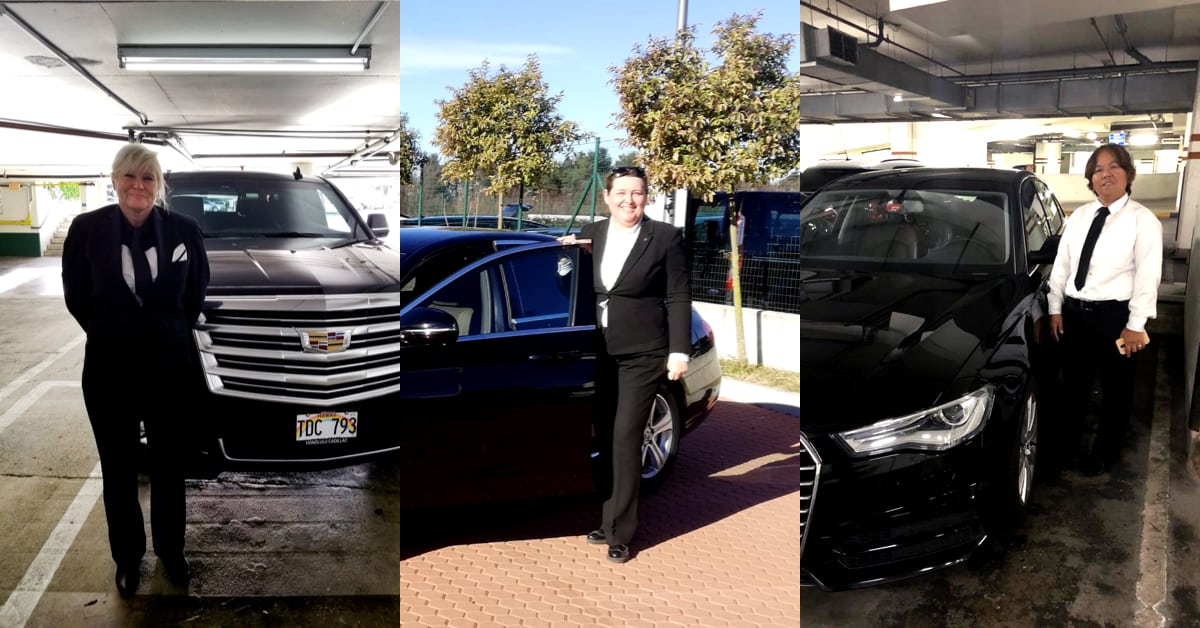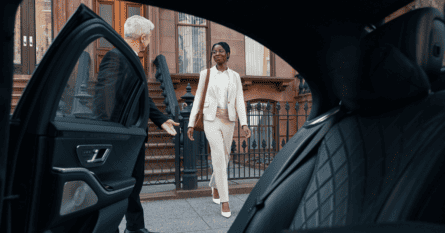The chauffeur industry has typically been dominated by men, but the tides are turning and there are now more women behind the wheel than ever. It’s an industry that has come leaps and bounds when it comes to inclusivity, but there is still some work to do.

Let’s talk etymology for a second. “Chauffeur” is a masculine French word, with the feminine equivalent being “chauffeuse” but, like many historically gendered professions, “chauffeur” has now become the accepted gender-neutral term, with “chauffeuse” now more likely to be used to describe a chair by a fireplace. (If you’re interested in learning more about the origins of the chauffeur industry and how it has evolved, check out this article.)
While the terms used may have become more inclusive, the industry itself is still a work in progress. According to DataUSA, only 16.1 percent of taxi drivers and chauffeurs in 2016 were female. In England, only three percent of taxi and private-hire drivers were female, as of 2017. There may not be many women providing driving services, but the amount of female business travelers is on the rise.
One major step forward for women in the travel industry has been in Saudi Arabia, where they lifted the ban on female drivers. However, there are still some bylaw restrictions that apply to female chauffeurs, including facing a fine for driving with only male passengers.
Since Saudi Arabia first issued licenses to women in June of 2018, ride-hailing services have begun actively recruiting and training female drivers in the country, not just to take advantage of a newly available workforce, but to offer female-driven rides as a unique selling point and service option.
Having female drivers as

“What a man can do, I can do”
According to Cecelia, a Blacklane chauffeur who has been driving in Abu Dhabi, United Arab Emirates since 2011, the call for female chauffeurs has been growing elsewhere in the region too.
“Here in Abu Dhabi, women guests want women drivers,” said Cecelia.
“Before, women drivers were in demand in the U.A.E. (United Arab Emirates), especially for local families… Now there are many women drivers.”
Cecelia conceded that some people are surprised to see a female chauffeur or even don’t want one because of their religious beliefs, but it doesn’t impact her can-do attitude toward customer service.
“It’s not a man’s world anymore”
Across the globe in Honolulu, Hawaii, U.S.A., fellow female Blacklane chauffeur Lynn, who has been driving for over a decade, also finds the positive reactions from guests often outweigh the negative.
“I have found that some cultures do not approve of a female chauffeur. That is very rare. I do not let it bother me and I always give them the best service that I can provide,” said Lynn.
“It has been a challenge being one of the only female chauffeurs/owners on the island.
“It has enabled me to strive more and stand out in a crowd in a mainly male dominated industry.”
Like Cecelia, Lynn also sees a more diverse future for the chauffeur industry.
“I think there will be more and more female chauffeurs as the years pass. I think a lot of women who enjoy driving should get out there and make a name for themselves.
“The industry isn’t as closed off to women as it used to be. It’s not a man’s world anymore.”
“It’s like freelance working”
Annalisa, a chauffeur in Milan, Italy who joined Blacklane in 2017, fell into the industry almost accidentally.
“I was preparing my husband for the exam to get a professional license — I studied a lot because I was testing him — so I had prepared myself to do the same,” she said.
“Male chauffeurs look at you as if they are seeing a ghost because we are not so many.
“I see that new females are coming into this kind of work, but there are very very few. I don’t know why that is. It’s like freelance working, you can decide what rides you want to do and at what time, you don’t have to work at night if you don’t want to.”
Are you interested in becoming a Blacklane chauffeur? Here’s how to become a Blacklane chauffeur service provider.




